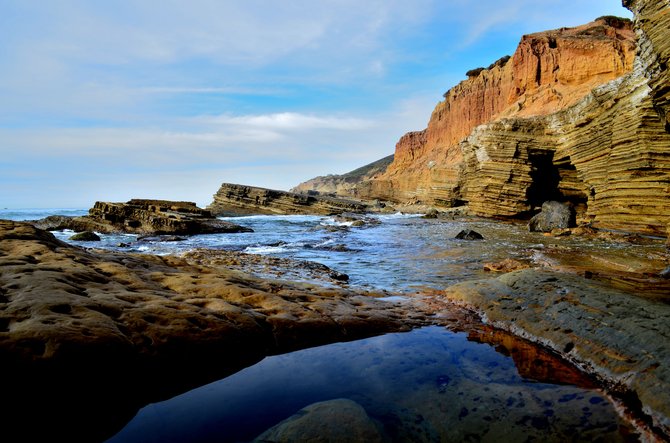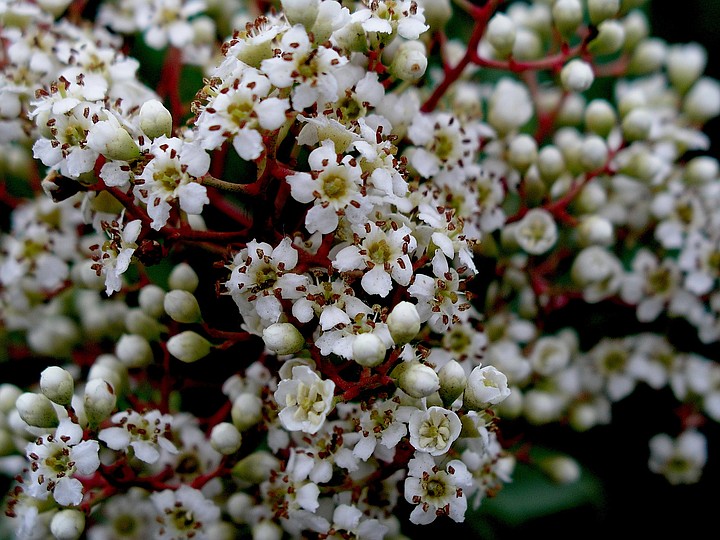 Facebook
Facebook
 X
X
 Instagram
Instagram
 TikTok
TikTok
 Youtube
Youtube

Extreme High and Low Tides are set to occur over several days in late December. On Friday, December 23, the tide reaches a high of 7.61 feet at 8:26 am and then falls to -1.96 feet at 3:45 pm. On Saturday, the tide peaks at 7.6 feet at 9:12 am and a low of -1.94 feet at 4:32 pm. Either of these low tide occasions are perfect for exploring marine life in the tidepool areas along San Diego County’s coastline. But if any strong winter storm happens to arrive from the west during these peak tides, some flooding of low-lying coastal areas around San Diego is likely. On the brighter side, birdwatchers have an opportunity to spot species of rare shorebirds that get pushed to the edges of local bays and coastal marshes by the high water.

Toyon, or “Christmas-berry,” one of the more distinctive shrubs of Southern California’s native chaparral plant community, is now flaunting clusters of bright red — but fairly toxic — berries. In coastal San Diego, toyon can be found wherever large patches of native vegetation survive, but especially in the thick chaparral covering some north-facing slopes. Note: toyon branches may look inviting to cut as a Christmas wreath — but they’re protected by California state law. And while it’s pleasant to enjoy viewing the fruits during the holiday season, don’t be surprised if a flock of cedar waxwings swoop in and strip the entire shrub of color.
There’s a new moon on December 23. It’s called a “New Moon” because it starts a new lunar cycle. During this phase, the Sun and Moon are closest together in the sky, on the same side of the Earth. From our perspective, the Moon appears totally dark; we cannot usually see it because we are facing the Moon’s shadowed side, which receives no direct sunlight. If we were to travel to the other side of the Moon, the part that faces the Sun, it would be totally illuminated.


Extreme High and Low Tides are set to occur over several days in late December. On Friday, December 23, the tide reaches a high of 7.61 feet at 8:26 am and then falls to -1.96 feet at 3:45 pm. On Saturday, the tide peaks at 7.6 feet at 9:12 am and a low of -1.94 feet at 4:32 pm. Either of these low tide occasions are perfect for exploring marine life in the tidepool areas along San Diego County’s coastline. But if any strong winter storm happens to arrive from the west during these peak tides, some flooding of low-lying coastal areas around San Diego is likely. On the brighter side, birdwatchers have an opportunity to spot species of rare shorebirds that get pushed to the edges of local bays and coastal marshes by the high water.

Toyon, or “Christmas-berry,” one of the more distinctive shrubs of Southern California’s native chaparral plant community, is now flaunting clusters of bright red — but fairly toxic — berries. In coastal San Diego, toyon can be found wherever large patches of native vegetation survive, but especially in the thick chaparral covering some north-facing slopes. Note: toyon branches may look inviting to cut as a Christmas wreath — but they’re protected by California state law. And while it’s pleasant to enjoy viewing the fruits during the holiday season, don’t be surprised if a flock of cedar waxwings swoop in and strip the entire shrub of color.
There’s a new moon on December 23. It’s called a “New Moon” because it starts a new lunar cycle. During this phase, the Sun and Moon are closest together in the sky, on the same side of the Earth. From our perspective, the Moon appears totally dark; we cannot usually see it because we are facing the Moon’s shadowed side, which receives no direct sunlight. If we were to travel to the other side of the Moon, the part that faces the Sun, it would be totally illuminated.
Comments